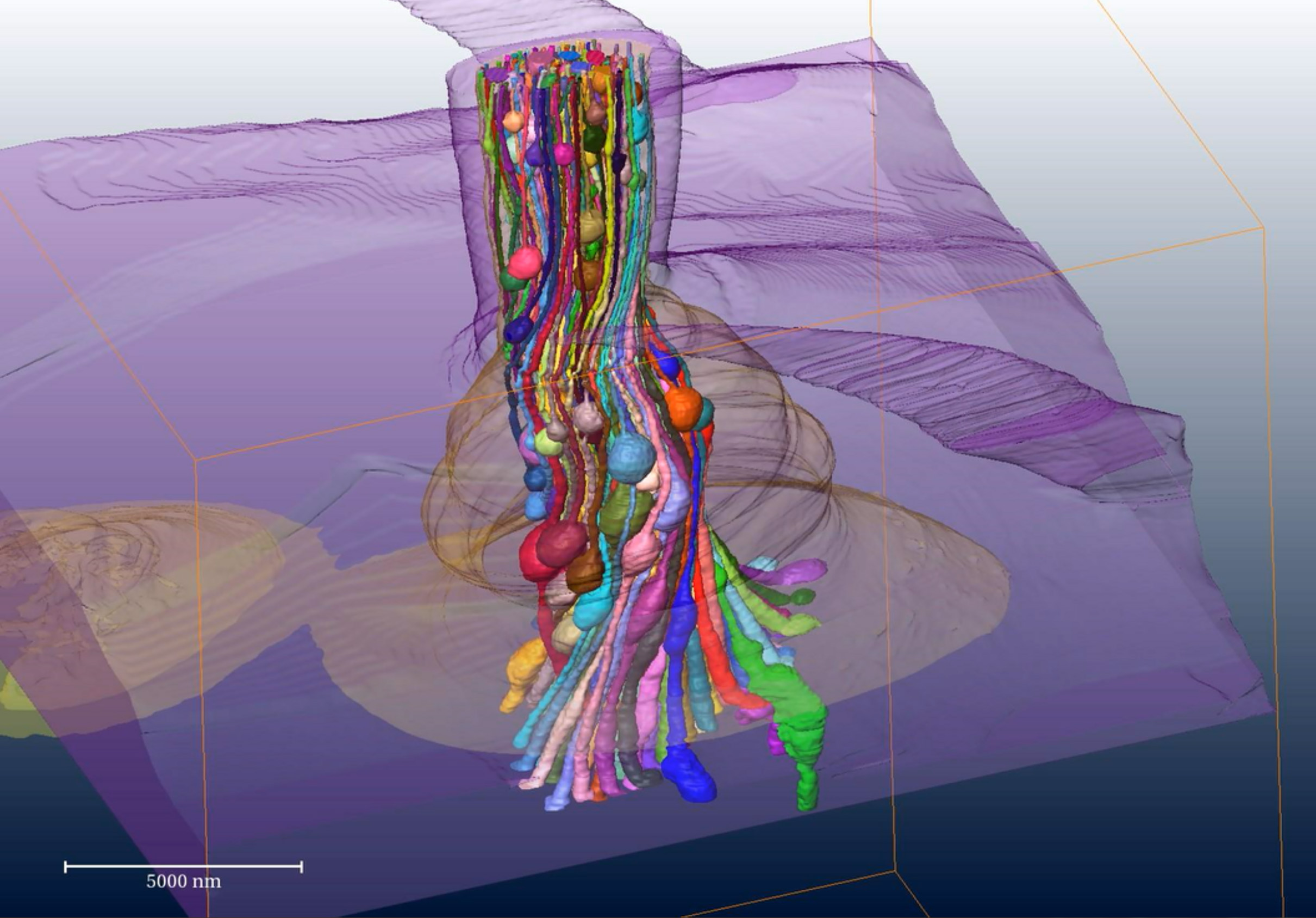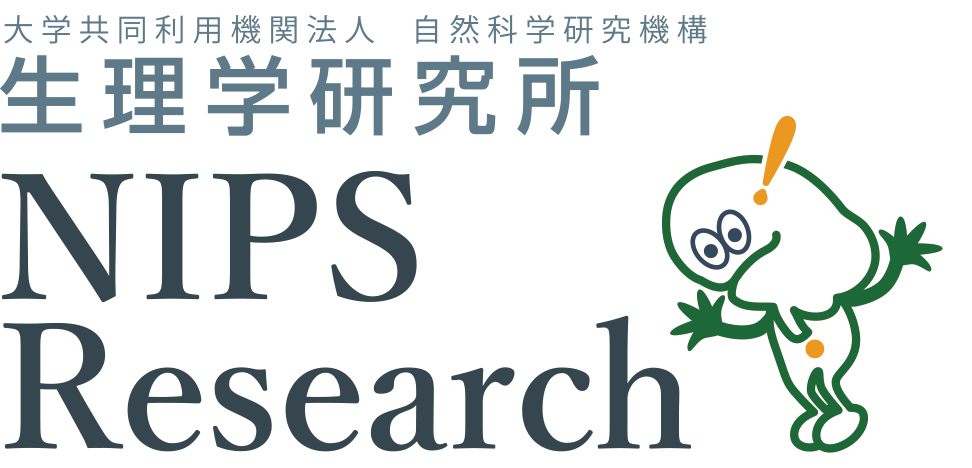Toward understanding of the neuromolecular basis of social behavior: 3D structure study of an olfactory sensory nervous system for nestmates discrimination of ant
Development of "Friends recognition" is essential for the formation and maintenance of society. As an example, ants are living in their society by recognizing nestmates or non-nestmates. "Pheromone" is used for the recognition of the nestmates in ant. Ants use a colony-specific blend of cuticular hydrocarbon as a pheromone to discriminate between nestmates and non-nestmates. However, since pheromones differ from one nest to another, there are huge combinations of pheromones. How do ants recognize this huge number of combinations of pheromones?
In this study, we first investigated the structure of the olfactory sensory unit in the ant's antennal sensor, which is responsible for the nestmates and non-nestmates discrimination using serial-block-face scanning electron microscope (SBF-SEM) in NIPS. As a result, about 100 olfactory receptor neurons (ORNs) extend their sensory processes into the sensory unit, there are more than 300 "beads" structures in those sensory processes, and the ONNs make a contact with the adjacent neurons via this "beads" structure at about 700 locations (Figure). Furthermore, these neural connections were subjected with a "gap junction" by Innexin proteins. A computer simulation of the information transmission based on these morphological features revealed that this neural network is able to enhance the nerval response for the ants' nestmates and non-nestmate discrimination.
The results reveal a part of the mechanism of the neural circuit for the ant’s nestmate and non-nestmate discrimination, which accurately extracts the necessary signal from the complicated input signals. By further investigation in the future, we expect to be able to lead to the development of bio-computer (AI) including the ability of self-learning and the possibility of social behavior.
Figure 3D the structure of the olfactory sensory unit in the ant's antennal sensor using SBF-SEM

Collaborative Researcher
Yusuke Takeichi, Tatsuya Uebi, Mamiko Ozaki (Kobe Univ.)
Naoyuki Miyazaki, Kazuyoshi Murata (NIPS)
Funding
Collaborative Study Program of the National Institute for Physiological Sciences
Release Source
Title: Putative Neural Network within an Olfactory Sensory Unit for Nestmate and Non-nestmate Discrimination in the Japanese Carpenter Ant: The Ultrastructures and Mathematical Simulation
Authors: Takeichi Y, Uebi T, Miyazaki N, Murata K, Yasuyama K, Inoue K, Suzaki T, Kubo H, Kajimura N, Takano J, Omori T, Yoshimura R, Endo Y, Hojo MK, Takaya E, Kurihara S, Tatsuta K, Ozaki K, Ozaki M
Journal: Frontiers in Cellular Neuroscience
Issue: 12, 310
Date: 2018.9.19 publish & online
URL (abstract): https://www.frontiersin.org/articles/10.3389/fncel.2018.00310/full
doi: 10.3389/fncel.2018.00310

